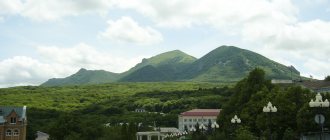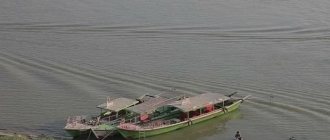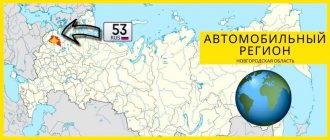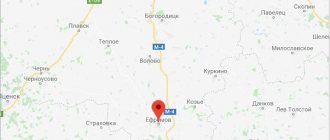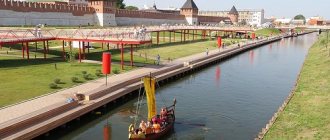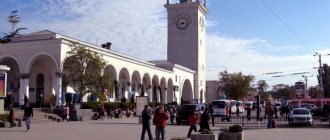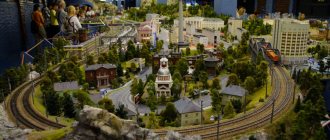City NazyvaevskCountry
Show/hide cards | |||||||||||||||||||||||||||||||
| Nazyvaevsk Moscow |
| Omsk Nazyvaevsk |
K: Settlements founded in 1910
Nazyvaevsk
- a city in Russia, the administrative center of the Nazyvaevsky district of the Omsk region.
Geography
Nazyvaevsk is located in the west of the Omsk region within the Ishim Plain, which is part of the West Siberian Plain. Due to the slight slope of the area, the area is poorly drained. To the south of the city are the Davydovskoye and Rybalovo swamps, to the west is a small lake without a name, to the north is the Platonovskoye swamp[2]. The city is divided almost into two equal halves by the Tyumen-Omsk railway line of the West Siberian Railway.
By road, the distance to the regional center of Omsk is about 210 km. A junction of highways to Tyukalinsk (79 km), Krutinka (55 km) and Isilkul (80 km)[3].
Climate
The climate is sharply continental, with significant temperature differences in winter and summer (according to the Köppen climate classification - humid continental with cool summers (Dfb)). The long-term precipitation norm is 397 mm. The greatest amount of precipitation falls in July - 67 mm, the least in March - 13 mm. The average annual temperature is −0.8 °C[4].
Timezone
| Nazyvaevsk, like the entire Omsk region, is located in the Omsk time zone. The offset relative to UTC is +6:00. Relative to Moscow time, the time zone has a constant offset of +3 hours and is designated in Russia as MSK+3. |
Administrative and municipal status[edit]
As part of the administrative divisions, Nazyvaevsk serves as the administrative center of Nazyvaevsky District, even though it is not part of it. [1] As an administrative division, it was formed separately as the city of Nazyvaevsk of regional significance
- an administrative unit with a status equal to that of districts.
[1] As a municipal division, the city of regional significance of Nazyvayevsk is included within the Nazyvayevsky municipal district as Nazyvayevsk urban settlement
. [4]
Story
Founded in 1910 as the station village of Sibirsky Posad in connection with the construction of the Tyumen-Omsk railway. Passage, and then the Nazyvaevskaya railway station (opened in 1913). The station was named after the village of Nazyvaikha, located 12 km away. In 1913, a warehouse for agricultural implements and machines of the Resettlement Administration was opened[5].
After 1917, the village of Sibirskoye. Since 1933, the village of Nazyvaevka, since 1947, the working village of Novonazyvaevka, the city of Nazyvaevsk since 1956[6].
Nazyvaevsk
The year of foundation of Nazyvaevsk was 1910. At the beginning of the twentieth century, railway construction developed in Russia. According to the state plan, a railway station was to appear near the villages of Nazyvaikha and Novo-Voskresenka, as well as the village of Lebedka. At the end of 1909, construction workers arrived here and settled in villages and villages. Rooms were allocated for engineers in the houses of priests and wealthy peasants. But already in March 1910, the builders built barracks for themselves and moved to live there. The history of Nazyvaevsk begins with these temporary dwellings. Among the founders of the city were people from peasants living in the European part of the country. Construction management was carried out by hereditary nobles, engineers M. Sytin and V. Svirshchevsky, engineer N. Gorkovenko and technician P. Kartashov. Construction of the station was completed in 1913. In addition to the station building, a water tower, a station office, a locomotive depot, and a freight house were built. At the same time, the rails were laid and the railway track was built. For future railway workers, brick houses were built near the station, each of which could accommodate several families. The station was named Nazyvaevskaya. The station village grew rapidly. It now has its own police station, primary school and even a medical service center. Intensive development was facilitated by its favorable geographical location. The station was located at the intersection of horse-drawn tracks. Archival documents of those years indicate that by 1914, that is, by the beginning of the First World War, the station was considered the economic center of a huge agricultural region, the area of which significantly exceeded the territory of the modern Nazyvaevsky district.
The population of the village grew simultaneously with its economy. The station's builders were mostly young. Many of them stayed in the village and started families. The growth of the population was witnessed by the metric books of the Church of the Resurrection of Christ, located in the village of Novo-Voskresenka (the temple was destroyed in the late 40s of the 20th century). The new settlement belonged specifically to this parish. The station village itself also had its own church. By 1917, more than two thousand people already lived in the village.
As in many other cities and towns in Russia, Soviet power established itself in the station village only on the second attempt. In mid-1918, units of the Czechoslovak Corps approached the station. They were accompanied by a detachment of Cossacks. The entire population of the village was convened for a meeting, at which local residents were told that Soviet power had been overthrown. The new “owners” organized a local government body in the village - the Zemskaya Uprava. At the suggestion of the council, the village was named Sibirsky Posad. In 1919, Soviet power was restored.
In 1924, a new, Soviet period began in the development of the village. After the administrative-territorial reform, the station settlement became the administrative center of the Nazyvaevsky district. The population of the village at that time was 2,725 people. The name given to the settlement in 1918 lasted until 1933. Then the station village began to be called the village of Novo-Nazyvaevka. In 1947, Novo-Nazyvaevka received the status of a workers' village. Its population increased to 10 thousand people.
The first secretary of the district committee of the CPSU P. Utkin put forward a proposal to assign the status of a city to the workers' village of Novo-Nazyvaevka. Utkin's proposal found support from many influential people. The basis for assigning the status was the high economic and demographic indicators of the working settlement, set out in a memorandum to the Presidium of the Supreme Council of the Russian Federation. On January 25, 1956, the working settlement of Novo-Nazyvaevsky was renamed Nazyvaevsk and received the status of a city.
Economy
| This article or section needs revision. Please improve the article in accordance with the rules for writing articles. |
| : Incorrect or missing image | This section is missing references to information sources. Information must be verifiable, otherwise it may be questioned and deleted. You may edit this article to include links to authoritative sources. This mark is set May 26, 2015 . |
K:Wikipedia:Articles without sources (type: not specified)
- Butter factory
- Meat processing plant
- Knitting factory "Sport" LLC
- DRSU
- HDSU
- Building materials database
- Reception point for ferrous metals (3 pieces)
- Palace of Culture
- A new church was built
- A new gymnasium was built
- 2 houses built (4 and 5 storeys)
Links[edit]
Notes[edit]
- ^ abcdefg Law No. 467-OZ
- ^ abc Federal State Statistics Service (2011). “All-Russian Population Census 2010. Volume 1" [All-Russian Population Census 2010, vol. 1]. All-Russian Population Census 2010 [All-Russian Population Census 2010]
. Federal State Statistics Service. - "26. The size of the permanent population of the Russian Federation by municipalities as of January 1, 2022". Federal State Statistics Service. Retrieved January 23, 2022.
- ^ abcde Law No. 548-OZ
- "On the Calculation of Time". Official Internet portal of legal information
. June 3, 2011. Retrieved January 19, 2022. - Post office. Information and computing center of OASU RPO. ( Post office
).
Search for postal service objects ( postal Search for objects
) (in Russian) - ↑
Federal State Statistics Service of Russia (May 21, 2004).
“The population of Russia, the constituent entities of the Russian Federation as part of federal districts, urban settlements, settlements, settlements is 3 thousand or more people” [Population of Russia, its federal districts, federal constituent entities, districts, urban settlements, rural settlements - administrative centers and rural settlements with a population of more than 3,000 people] (XLS). All-Russian Population Census of 2002 [All-Russian Population Census of 2002]
. - “All-Union Population Census of 1989. The current population of union and autonomous republics, autonomous regions and districts, territories, effects, urban settlements and villages. All-Union Population Census of 1979. National composition of the population by regions of Russia” [All-Union Population Census of 1979. Ethnic composition of the population by regions of Russia] (XLS). All-Union Population Census of 1979 [All-Union Population Census of 1979]
.
1979 - via Demoscope Weekly
(website of the Institute of Demography of the State University - Higher School of Economics.
Excerpt characterizing Nazyvaevsk
- What, master, aren’t you sleeping? - said the Cossack sitting under the truck. - No; and... Likhachev, I think your name is? After all, I just arrived. We went to the French. - And Petya told the Cossack in detail not only his trip, but also why he went and why he believes that it is better to risk his life than to make Lazar at random. “Well, they should have slept,” said the Cossack. “No, I’m used to it,” answered Petya. - What, you don’t have flints in your pistols? I brought it with me. Isn't it necessary? You take it. The Cossack leaned out from under the truck to take a closer look at Petya. “Because I’m used to doing everything carefully,” said Petya. “Some people just don’t get ready, and then they regret it.” I don't like it that way. “That’s for sure,” said the Cossack. “And one more thing, please, my dear, sharpen my saber; dull it... (but Petya was afraid to lie) it was never sharpened. Can this be done? - Why, it’s possible. Likhachev stood up, rummaged through his packs, and Petya soon heard the warlike sound of steel on a block. He climbed onto the truck and sat on the edge of it. The Cossack was sharpening his saber under the truck. - Well, are the fellows sleeping? - said Petya. - Some are sleeping, and some are like this. - Well, what about the boy? - Is it spring? He collapsed there in the entryway. He sleeps with fear. I was really glad. For a long time after this, Petya was silent, listening to the sounds. Footsteps were heard in the darkness and a black figure appeared. -What are you sharpening? – the man asked, approaching the truck. - But sharpen the master’s saber. “Good job,” said the man who seemed to Petya to be a hussar. - Do you still have a cup? - And over there by the wheel. The hussar took the cup. “It’ll probably be light soon,” he said, yawning, and walked off somewhere. Petya should have known that he was in the forest, in Denisov’s party, a mile from the road, that he was sitting on a wagon captured from the French, around which the horses were tied, that the Cossack Likhachev was sitting under him and sharpening his saber, that there was a big black spot to the right is a guardhouse, and a bright red spot below to the left is a dying fire, that the man who came for a cup is a hussar who was thirsty; but he knew nothing and did not want to know it. He was in a magical kingdom in which there was nothing like reality. A large black spot, perhaps there was definitely a guardhouse, or perhaps there was a cave that led into the very depths of the earth. The red spot might have been fire, or maybe the eye of a huge monster. Maybe he is definitely sitting on a wagon now, but it may very well be that he is sitting not on a wagon, but on a terribly high tower, from which if he fell, he would fly to the ground for a whole day, a whole month - keep flying and never reach it . It may be that just a Cossack Likhachev is sitting under the truck, but it may very well be that this is the kindest, bravest, most wonderful, most excellent person in the world, whom no one knows. Maybe it was just a hussar passing for water and going into the ravine, or maybe he just disappeared from sight and completely disappeared, and he was not there. Whatever Petya saw now, nothing would surprise him. He was in a magical kingdom where everything was possible. He looked at the sky. And the sky was as magical as the earth. The sky was clearing, and clouds were moving quickly over the tops of the trees, as if revealing the stars. Sometimes it seemed that the sky cleared and a black, clear sky appeared. Sometimes it seemed that these black spots were clouds. Sometimes it seemed as if the sky was rising high, high above your head; sometimes the sky dropped completely, so that you could reach it with your hand. Petya began to close his eyes and sway. Drops fell. There was a quiet conversation. The horses neighed and fought. Someone was snoring. “Ozhig, zhig, zhig, zhig...” the saber being sharpened whistled. And suddenly Petya heard a harmonious choir of music playing some unknown, solemnly sweet hymn. Petya was musical, just like Natasha, and more than Nikolai, but he had never studied music, did not think about music, and therefore the motives that unexpectedly came to his mind were especially new and attractive to him. The music played louder and louder. The melody grew, moving from one instrument to another. What was called a fugue was happening, although Petya had not the slightest idea what a fugue was. Each instrument, sometimes similar to a violin, sometimes like trumpets - but better and cleaner than violins and trumpets - each instrument played its own and, not yet finishing the tune, merged with another, which started almost the same, and with the third, and with the fourth , and they all merged into one and scattered again, and again merged, now into the solemn church, now into the brightly brilliant and victorious.
